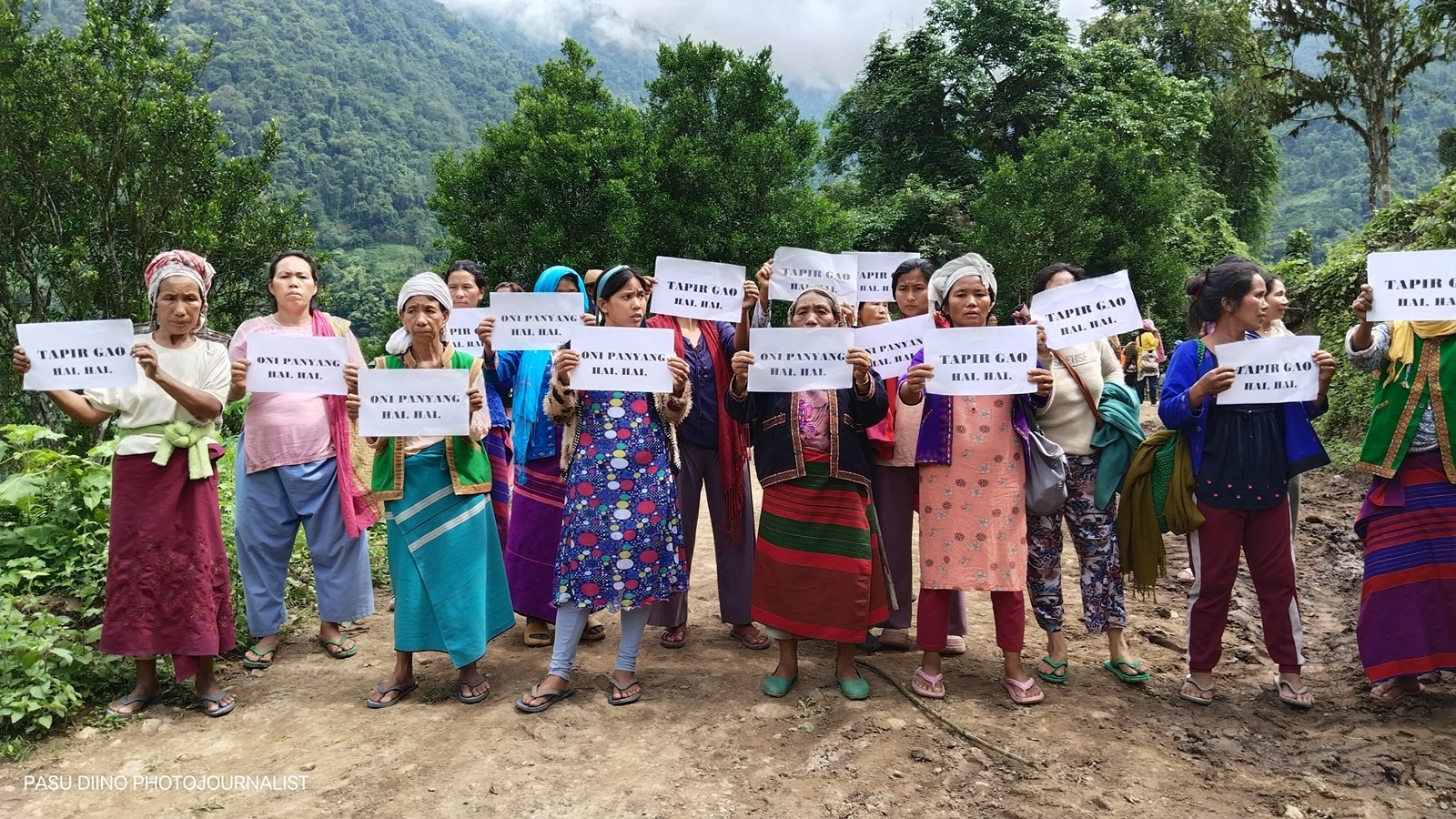Protests have again broken out in Arunachal Pradesh’s Siang district against the proposed 11,000 MW Upper Siang hydropower project. This comes days after security forces were moved into the area and the National Hydroelectric Power Corporation (NHPC) brought in equipment to begin drilling work for a project feasibility analysis.
The protesters, including those whose villages and farmlands would be affected by the dam, began an indefinite dharna at Beging in Siang district under the banner of Siang Indigenous Farmers’ Forum (SIFF).
The SIFF has been leading the opposition to the proposed Upper Siang hydropower project.
Beging is the site where state authorities and the NHPC have sought to begin core drilling work to prepare a pre-feasibility report (PFR) for the project, a step that has been stalled for a year because of local opposition.
According to an NHPC official, the equipment required for this was moved to Beging on May 20 after being given the go-ahead by the state administration and after Central Armed Police Forces (CAPF) were deployed there. The Beging or Paring site is one of three proposed project sites along the Siang — the other two being Ugeng and Dite Dime.

“With the go-ahead, we proceeded, but before the work started, the protests also started. So, it looks like it will be stalled,” said the official.
Neither the district police superintendent nor the deputy commissioner could be reached for comment.
Story continues below this ad
Local residents said that besides Beging, CAPF personnel have also been deployed at other villages such as Geku and Jengging, and in the district headquarters of both Siang and Upper Siang districts.
 As hundreds gathered at the site to register their protest, some even torched a hanging bridge connecting Beging to the main road. (Source: Express Photo)
As hundreds gathered at the site to register their protest, some even torched a hanging bridge connecting Beging to the main road. (Source: Express Photo)
Last December, panic and protests had spread in the region after the state government took a decision to deploy nine companies of CAPF as well as additional police to the proposed project sites in a bid to begin the drilling work. In the face of this opposition, the forces had not been moved into the area.
“After that, the forces did not come. But now they have come suddenly. Accommodation and permanent toilets have been made for them. The locals had not been consulted nor given any notification before the forces were brought in. We have all been opposing these dam activities since the beginning, but they are trying to do it forcefully,” said Nith Paron, a student leader from Upper Siang district.
As hundreds gathered at the site to register their protest, some even torched a hanging bridge connecting Beging to the main road.
Story continues below this ad
Dubit Siram, another local activist and resident of Parong village, said protesters intend to be at the site around the clock.
“No consent was taken from locals before trying to force the work ahead using the armed forces. Now we are giving a three-day ultimatum to the authorities to remove all the armed forces from Siang, Upper Siang and East Siang districts and to remove all the equipment,” he said.
Both the central and state governments are pushing for the Siang dam as a means to counter the possible effects of the China’s planned 60,000 MW dam — the world’s largest hydro-electric project — on the Yarlung Tsangpo river in Tibet. The Yarlung Tsangpo flows into Arunachal Pradesh, where it is known as the Siang. It then joins other tributaries like the Dibang and Lohit to become the Brahmaputra in Assam.
Arunachal Cabinet Minister Ojing Tasing, the MLA from the Pangin constituency in Siang, told The Indian Express that “the dam will be built, the government will not compromise on that”.
Story continues below this ad
He also claimed that “80% of the people” in his constituency have “verbally given the green signal” for the PFR to be completed, claiming that the protests were “instigated by some people from outside the district”.
“The paramilitary forces are there to protect the equipment and the labour, not to threaten the public. The Arunachal government has held that we will only go forward with the work after taking the people into confidence,” he said.






